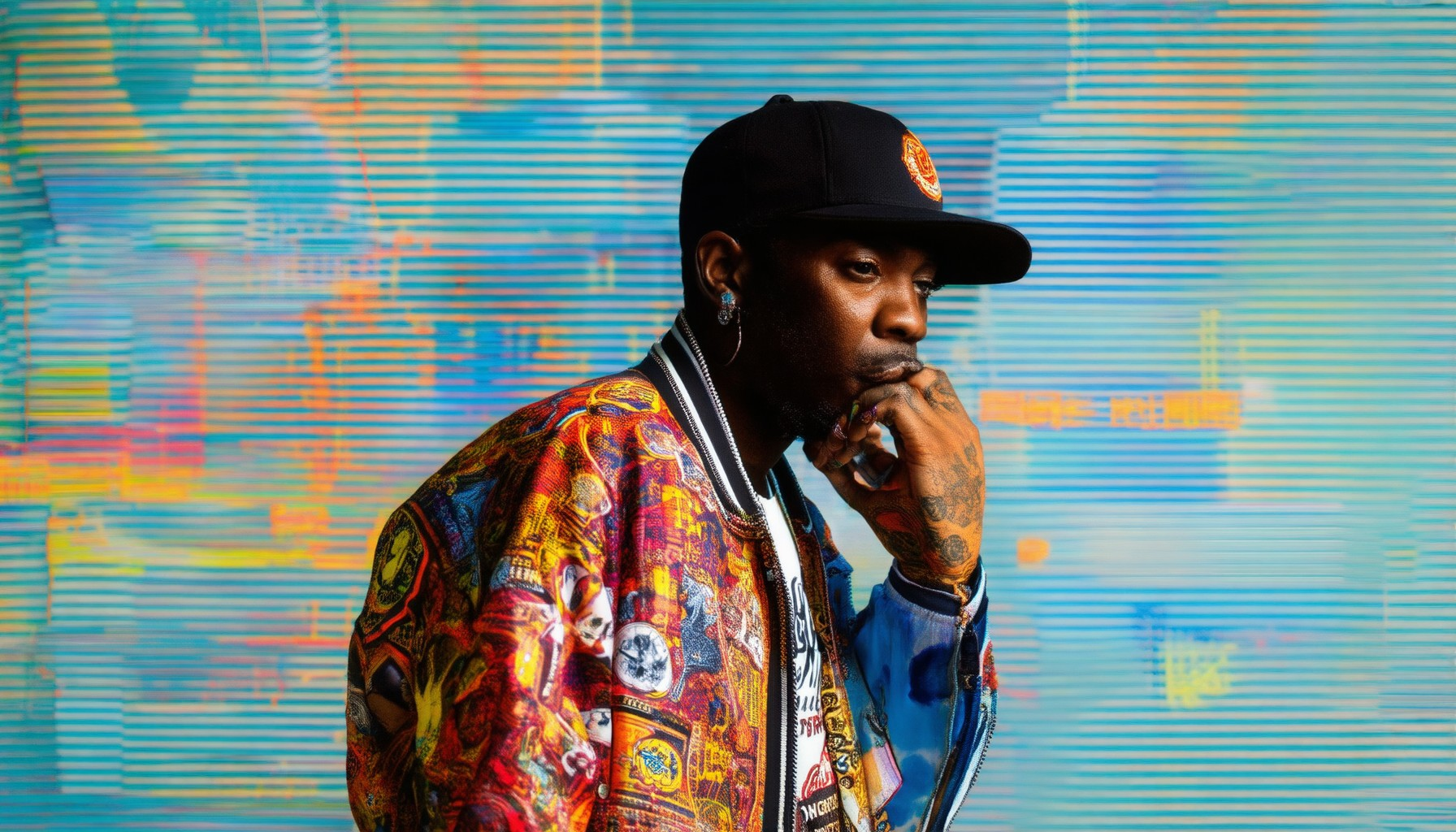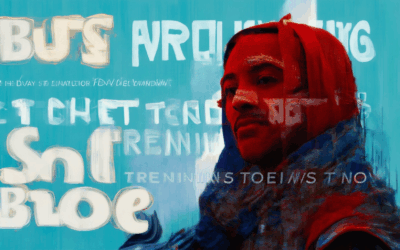The world of hip-hop and culture updates is constantly evolving, shaping trends, influencing fashion, and driving social change. From groundbreaking music to innovative streetwear styles, hip-hop has become a global phenomenon that reflects the essence of modern society. Whether it’s through the rhythmic beats of rap, the vibrant art of graffiti, or the bold statements of urban fashion, hip-hop culture continues to redefine norms and inspire new movements. Stay ahead with the latest updates on hip-hop news, fashion trends, and cultural shifts that are reshaping our world.
Key Takeaways
- Hip-Hop Redefines Fashion: From streetwear dominance to high-fashion collaborations, hip-hop is revolutionizing the way we view style and individuality.
- Cultural Revolution in Fashion: By embracing inclusivity and authenticity, hip-hop has transformed the fashion industry, challenging traditional norms and fostering a more diverse landscape.
- Streetwear Goes Mainstream: Once a niche trend, streetwear is now a legitimate fashion category, thanks to hip-hop’s influence and the rise of iconic brands.
- High Fashion Meets Hip-Hop: Collaborations between luxury labels and hip-hop artists are redefining runway shows, bringing fresh perspectives and innovation.
- Inclusivity in Modeling: Hip-hop culture has brought greater diversity to the modeling world, promoting a wider range of beauty standards.
- Runway Influence: Streetwear-inspired designs are now a staple on runways, influencing silhouettes and color palettes globally.
- Graffiti in Fashion: Bold, urban art influences fashion, blending graffiti with high-end designs to create unique, eye-catching looks.
- Global Fashion Impact: Hip-hop fashion transcends borders, creating unique hybrid styles that reflect a global cultural exchange.
- Social Media and Style: Hip-hop influencers are driving fashion trends via social media, connecting with audiences worldwide and shaping current styles.
- Three Pillars of Hip-Hop: DJing, MCing, and breaking are integral to hip-hop’s essence, defining its artistic expression and cultural significance.
- Influence on Music and Society: Beyond music, hip-hop impacts societal change, addressing social issues and shaping cultural discourse.
- African Roots in Dance: The foundation of hip-hop dance lies in African traditions, influencing everything from footwork to storytelling through movement.

How Has Hip-Hop Affected Culture?
Hip-hop has had a profound and far-reaching impact on global culture, shaping music, fashion, film, politics, and visual arts. Its influence extends beyond entertainment, serving as a powerful platform for social commentary, community empowerment, and artistic expression.
The Evolution of Music
Hip-hop began in the late 1970s in New York City, emerging as a cultural phenomenon that redefined music and storytelling. Artists like DJ Kool Herc and Grandmaster Flash laid the foundation, blending beats, rhymes, and social commentary to create a unique sound and style. Over time, hip-hop has evolved into numerous subgenres, from East Coast and West Coast styles to Southern hip-hop and international variations, influencing countless musicians worldwide.
Cultural Impact Beyond Music
- Fashion: Hip-hop fashion has transformed global streetwear, popularizing styles like high-top sneakers, hoodies, and bold graphic tees. Designers and brands now regularly draw inspiration from hip-hop aesthetics.
- Film and Media: Movies like Beats, Rhymes, and Life: The Story of Hip-Hop and series like Our Planet’s History of Rap highlight hip-hop’s cultural significance. Documentaries and films featuring hip-hop artists and stories continue to explore its societal role.
- Politics and Activism: Artists have used hip-hop as a tool for social justice, addressing issues like police brutality, systemic inequality, and racial injustice. The genre has become a voice for marginalized communities and a catalyst for change.
- Visual Arts: Graffiti art, inspired by hip-hop culture, has become a recognized art form. Murals and installations by artists like Banksy and Jean-Michel Basquiat showcase the genre’s influence on visual expression.
A Platform for Voices
Hip-hop has provided a platform for underrepresented communities to share their stories and perspectives. It challenges mainstream narratives and amplifies voices often excluded from traditional media. This inclusivity has fostered a sense of unity and pride among fans and contributors alike.
Global Reach and Adaptation
Hip-hop has transcended borders, influencing cultures in Africa, Asia, Europe, and beyond. Local artists adapt the genre to reflect their own identities, creating unique hybrids like Afrobeats, K-pop hip-hop, and French rap. This global adaptation ensures hip-hop remains fresh and relevant across diverse audiences.
Aozzora, along with platforms like Complex, XXL, and Vulture, continues to celebrate hip-hop’s impact through in-depth articles, interviews, and features. Explore our coverage to discover how hip-hop shapes today’s culture and inspires future generations.
For more insights into hip-hop’s influence, visit our main page and dive into our comprehensive coverage of music, fashion, and cultural trends.
What Are the 4 Types of Hip Hop Culture?
Hip hop culture encompasses a vibrant and multifaceted array of elements that have transcended beyond music to influence various aspects of modern society. Below are the four foundational pillars of hip hop culture:
- DJing
At the heart of hip hop lies the art of DJing. DJs manipulate turntables, mix records, and blend tracks to create seamless transitions and unique soundscapes. This skill has evolved from block parties to global stages, remaining a cornerstone of hip hop culture. - MCing (Rapping)
MCs, or emcees, are the voices of hip hop. Their ability to tell stories, express emotions, and drop beats with precision has made rapping one of the most iconic forms of artistic expression in the genre. Rappers come in all styles, from lyrical giants to storytelling masters. - Graffiti Art
Graffiti is the visual heartbeat of hip hop. Artists use spray paint, markers, and brushes to create bold, often politically charged murals that decorate urban landscapes worldwide. This art form has evolved from subway trains to museum exhibitions, gaining recognition as a legitimate form of artistic expression. - Breaking (Breakdancing)
Breaking, also known as b-boying and b-girling, is the physical aspect of hip hop. Dancers perform intricate moves like footwork, spins, and air flips to the rhythm of the music. This element has become synonymous with energy, creativity, and the spirit of hip hop.
These four elements—DJing, MCing, graffiti art, and breaking—form the bedrock of hip hop culture, shaping its evolution and influence across generations. Each component has its own history and significance, contributing to the rich tapestry of this globally recognized phenomenon. Explore further to discover the deep roots and widespread impact of hip hop culture.

What Are the 4 Elements of Hip Hop Culture?
The hip-hop culture is rooted in four fundamental elements that define its identity and evolution. These elements have transcended beyond music to become a global phenomenon influencing art, fashion, and social expression.
- Deejaying (Turntabling) : The backbone of hip-hop, deejaying involves manipulating records to create beats and rhythms. Pioneered by figures like DJ Kool Herc, this skill laid the foundation for the genre’s distinctive sound. Learn more .
- Rapping (MCing or Rhyming) :
Rapping is the verbal delivery that sets apart hip-hop from other genres. MCs (Master of Ceremonies) use intricate rhymes, storytelling, and wordplay to captivate audiences. Explore rapping techniques . - Graffiti Painting (Graf or Writing) :
Graffiti is a visual art form that expresses the rebellious spirit of hip-hop. It combines creativity with urban exploration, often featuring bold styles and messages that resonate with the culture. Discover graffiti history . - Break Dancing (B-Boying) :
Breakdance is the physical aspect of hip-hop, characterized by fluid, acrobatic moves performed to the beat. It showcases agility, timing, and precision, making it a thrilling spectacle. Watch b-boy performances .
These elements collectively form the essence of hip-hop, making it a vibrant and dynamic culture that continues to evolve and influence various aspects of modern life.

How Has Hip-Hop Impacted Fashion and Culture?
Hip-hop culture has had a profound impact on fashion and culture, shaping trends, influencing design, and fostering a unique sense of identity. Its influence extends far beyond music, touching upon streetwear, high fashion, and societal norms.
The Rise of Streetwear
Hip-hop has been instrumental in the rise of streetwear as a legitimate fashion category. Originating from urban neighborhoods, the culture emphasizes authenticity, individuality, and bold statements. Brands like Supreme, Nike Air Max, and Adidas have embraced this aesthetic, creating limited-edition drops that command attention and drive demand.
Cultural Representation
Hip-hop culture has brought greater diversity and representation to the fashion industry. Models and designers from underrepresented backgrounds are now mainstream, challenging traditional beauty standards and promoting inclusivity. This shift has led to a more varied runway shows and ad campaigns that reflect the real world.
Runway Influence
Streetwear has made its way to the runway, with major fashion houses like Balenciaga and Louis Vuitton collaborating with hip-hop artists and influencers. This fusion of urban and high fashion has created a bridge between two worlds, inspiring new silhouettes and color palettes that resonate globally.
Graffiti and Visual Art
Hip-hop’s connection to graffiti art has influenced fashion through vibrant, bold designs. Brands and designers now incorporate murals and street art into their collections, blending art and fashion in innovative ways. This collaboration has elevated the visibility of urban artists and their contributions to contemporary culture.
Global Impact
Hip-hop fashion is no longer confined to urban areas. It has become a global phenomenon, with fans adopting the style in countries around the world. This cultural exchange has led to a mix of local and international influences, creating unique hybrid styles that define modern fashion.
Technology and Social Media
Hip-hop culture has played a significant role in the rise of social media and influencer culture. Artists and influencers in the hip-hop community use platforms like Instagram and TikTok to showcase their personal style, creating a ripple effect that influences millions of followers worldwide.
Overall, hip-hop has redefined fashion by emphasizing individuality, inclusivity, and the power of self-expression. Its impact continues to shape the industry, driving innovation and pushing boundaries in ways that were unimaginable just a few decades ago.
What Three Parts of Hip Hop Culture Have Become Popular?
Hip hop culture encompasses various elements that have gained significant popularity over time. Here are three prominent aspects:
- DJing : The art of DJing involves the creative manipulation of beats and music, layering tracks to create unique sounds and rhythms. This skill is central to the development of hip hop and remains a cornerstone of its evolution.
- MCing (Rapping) : MCing, short for Master of Ceremonies, refers to the act of rapping—delivering spoken-word poetry over beats. Rappers use their voice, style, and lyrical skills to tell stories, express emotions, and challenge societal norms, making it a vital component of hip hop culture.
- Breaking (B-boying) : Breaking is the dance form associated with hip hop, characterized by intricate footwork, body movements, and freezes. It combines precision, creativity, and storytelling through movement, making it a globally recognized aspect of the culture.
These elements have not only defined hip hop but have also influenced various forms of entertainment and societal discourse worldwide.

What Culture Mostly Influenced Hip Hop Dance?
The primary culture that influenced hip-hop dance is African dancing. This influence dates back to the late 1960s and early 1970s, when hip-hop emerged as a new form of street dance.
Origins and Key Characteristics
Hip-hop dance draws heavily from African dance traditions, particularly those from West Africa. Moves like the “shuffling” of feet and the emphasis on rhythm and timing are deeply rooted in African dance styles. These movements were adapted and evolved into the breakdance styles we see today, such as b-boying and popping.
Key Characteristics
- Rhythm and Timing: African dance emphasizes a strong sense of rhythm and timing, which is a fundamental aspect of hip-hop dance.
- Body Movement: Both African and hip-hop dances focus on body movement that tells a story or conveys emotion through dynamic expressions.
- Community and Performance: Like African dances, hip-hop often involves storytelling and performance, making it a social and communal activity.
Other Influences
While African dance is the primary influence, hip-hop dance has also incorporated elements from other cultures. For instance, street dance styles from Latin America and Europe have added unique flavors to hip-hop choreography. However, these influences are often blended with the foundational African elements to create something distinctly hip-hop.
Conclusion
In summary, African dancing has been the most influential culture on hip-hop dance, shaping its origins and many of its core characteristics. While other styles have added diversity, the foundation of hip-hop dance remains deeply connected to African traditions.





0 Comments